By Nicki Richesin, The Children’s Book Review
Published: November 29, 2011
During the holiday season it’s a great joy to share family traditions and spend time together. Every year, I look forward to reading these beloved books below to my daughter.
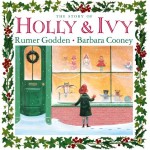
By Rumer Godden; illustrated by Barbara Cooney
Rumer Godden begins The Story of Holly & Ivy with the sweetest line, “This is a story about wishing.” When an orphan named Ivy and a dreamy doll named Holly see each other through a toy shop window, magic happens. In this classic Christmas tale, Holly and Ivy both find a sense of belonging in their new home and to each other. Wishes come true in part thanks to Barbara Cooney’s tender illustrations of the festive village and toys. Godden captures the precious beauty of a brave girl unwilling to give up on her dream. (Ages 5-10)
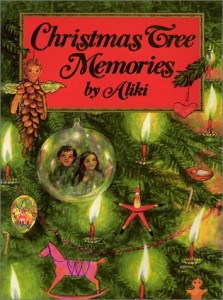
By Aliki
My daughter and I love returning to Christmas Tree Memories by Aliki each December just like the family’s tradition in the book of sitting by their tree with cookies and a roaring fire to recount each story behind their homemade ornaments. Aliki imbues such gentleness to each character, whether it’s Papouli or the children, the love this family feels for each other comes across with her every detail. (Ages 4-8)
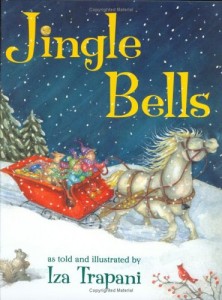
By Iza Trapani
Jingle Bells (as told and illustrated by Iza Trapani) is a rollicking fun songbook filled with holiday customs and traditions from around the world. Children will enjoy learning about bearded little gnomes in Sweden, lantern parades in the Philippines, breaking the piñata in Mexico, and presents found in their shoes in Italy. (Ages 4-8)
Little Tim and the Brave Sea Captain
Written and illustrated by Edward Ardizzone
Scholastic Book Services, 1968
This charming book is written about a boy named Little Tim who wants to be sailor. According to the story, Little Tim lived by the sea and spent his time on the beach playing on the boats. His friend, the old boatman, taught him about ships, the sea and how to make sailors knots. Sometimes Little Tim would visit his old friend, Captain McFee, who would tell him about his voyages and sometimes give him a sip of his grog. (Gotta love that) "Sometimes Tim would astonish his parents by saying, "That's a Cunarder" or "Look at that barquentine on the port bow." (guffaw) When Little Tim asks his parents if he can be a sailor, they tell him he is too young and must wait many years until he is grown up. So the plot is cast.
1 Comments on Little Tim and the Brave Sea Captain, last added: 3/20/2011
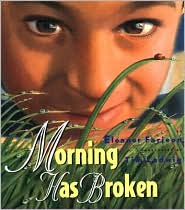 Last year I did a Poetry Friday post on an anthology of children’s poems that featured a book called Inner Chimes. I excerpted a snippet of a poem I liked by British writer Eleanor Farjeon (1881-1965) and as a result became curious about her. After reading her biography, I sought out her books. Our local library did not have lot of her books available for loan. Many are out-of-print and some, in fact, were housed in the juvenile reference section which require special permission to view. One book, however, of her most famous hymn-poem “Morning Has Broken” was available in a picture book format illustrated by Tim Ladwig (Eerdmans, 1996) I took it out and read it to my daughter, and then showed her a Youtube of Cat Stevens‘ famous rendition of the hymn. It was a great way to enjoy the poem! I was also able to take out Kaleidoscope (illustrated by Edward Ardizzone, Oxford University Pres, 1963.) Kaleidoscope is a collection of short lyrical sketches about a young boy named Anthony and his childish but deeply poetic perceptions of the world. In her Foreword, Farjeon explains
Last year I did a Poetry Friday post on an anthology of children’s poems that featured a book called Inner Chimes. I excerpted a snippet of a poem I liked by British writer Eleanor Farjeon (1881-1965) and as a result became curious about her. After reading her biography, I sought out her books. Our local library did not have lot of her books available for loan. Many are out-of-print and some, in fact, were housed in the juvenile reference section which require special permission to view. One book, however, of her most famous hymn-poem “Morning Has Broken” was available in a picture book format illustrated by Tim Ladwig (Eerdmans, 1996) I took it out and read it to my daughter, and then showed her a Youtube of Cat Stevens‘ famous rendition of the hymn. It was a great way to enjoy the poem! I was also able to take out Kaleidoscope (illustrated by Edward Ardizzone, Oxford University Pres, 1963.) Kaleidoscope is a collection of short lyrical sketches about a young boy named Anthony and his childish but deeply poetic perceptions of the world. In her Foreword, Farjeon explains how the character of Anthony was based on a poet acquaintance of hers who had grown up in the countryside. As writers, they shared memories of their past childhood — hers of a girl growing up in London and he as a boy in Somerset. I was impressed by these prose sketches by Farjeon, seemingly lighthearted in tone, but profoundly perceptive at the same time. She seemed to capture that essential childish awe and wonder that is of the nature of the poet, who perceives and then delights in words. As old as the book is, it does not feel dated; the observations are not sentimental nor trite. I enjoyed reading these sketches, mostly for myself although I did try reading a couple to my daughter. If you can find Farjeon’s books in your library, I’d recommend seeking them out. They are little treasures from the past, well worth savoring today.
how the character of Anthony was based on a poet acquaintance of hers who had grown up in the countryside. As writers, they shared memories of their past childhood — hers of a girl growing up in London and he as a boy in Somerset. I was impressed by these prose sketches by Farjeon, seemingly lighthearted in tone, but profoundly perceptive at the same time. She seemed to capture that essential childish awe and wonder that is of the nature of the poet, who perceives and then delights in words. As old as the book is, it does not feel dated; the observations are not sentimental nor trite. I enjoyed reading these sketches, mostly for myself although I did try reading a couple to my daughter. If you can find Farjeon’s books in your library, I’d recommend seeking them out. They are little treasures from the past, well worth savoring today.
This week’s Poetry Friday host is Laura at Writing the World for Kids.
I happened to be in the British Library this week, and there's a walk-in exhibition of children's poetry. I'd really recommend a visit if you can spare the time: one highlight for me was a notebook with Christina Rossetti's 'Who has Seen the Wind' in her own writing. There's also a letter by Ted Hughes, but the bulk of the exhibition is of printed books, old and new, open at some utterly wonderful poems, together with illustrations, some charming, others spine-tingling. Among the spine-tingling ones I'd include a version of 'The Highwayman' by Alfred Noyes, illustrated by Charles Keeping in his inimitable scrawly ink and wash. Atmospheric, menacing, and ever so slightly camp, his masked highwayman glitters in the moonlight on a pale ribbon of a road, under bare trees whose branches appear to undulate as if underwater.
As my new book, Dark Angels, comes out this week, it set me thinking about the relationship between art and text: particularly cover art. We set a great deal of store on the perfect cover these days: publishers, authors and booksellers alike worry over the exact impression the cover should make: will it stand out? Will it have 'pick-up-a-bility'?
This seems to be a fairly modern phenomenon; and I'm not sure that children are as fussed as we are abou t superb covers. The Harry Potter books fared quite well without them. And while some of the classic books I loved best as a child had amazing covers, others did not: some (like my version of The Wind in the Willows, which was a wartime austerity volume passed on to me by my mother), had no artwork on the cover at all, and none inside either, and it didn't put me off. In fact, thinking about it, that's probably where I gained my habit of pulling out the most obscure looking books from second-hand shelves - to see if a dull cover hides some treasure within. To the left here is the 1959 cover of Lucy Boston's The Children of Green Knowe. It wouldn't exactly stand out on the shelf, but I loved and still love its dark mystery.
t superb covers. The Harry Potter books fared quite well without them. And while some of the classic books I loved best as a child had amazing covers, others did not: some (like my version of The Wind in the Willows, which was a wartime austerity volume passed on to me by my mother), had no artwork on the cover at all, and none inside either, and it didn't put me off. In fact, thinking about it, that's probably where I gained my habit of pulling out the most obscure looking books from second-hand shelves - to see if a dull cover hides some treasure within. To the left here is the 1959 cover of Lucy Boston's The Children of Green Knowe. It wouldn't exactly stand out on the shelf, but I loved and still love its dark mystery.
Perhaps we didn't have great expectation of covers when I was a child, as witness this 1968 Puffin edit ion of Meindert DeJong's The Wheel on The School. No self-respecting modern publisher would dream of putting out anything so dull. Would they?
ion of Meindert DeJong's The Wheel on The School. No self-respecting modern publisher would dream of putting out anything so dull. Would they?
Yet really, it does everything necessary: it's got the intriguing title, the author name, and a mildly interesting picture - even if the cartwheel with nesting storks appears to be hovering in mid-air. Compared with my modern cover, above, it could even be regarded as pleasingly uncluttered. At any rate, with such a book one wasted no time in opening it to see what it was about, and so the decision whether to read it or not was prose-based...

Others were better. Here's my much-read 1965 copy of Alan Garner's The Weirdstone of Brisingamen. I don't know what the first edition cover looked like, but this picture has stuck with me for life. I love the brooding gaze of the dwarf and the rich, magical colours. All the same, it's q uite clearly an 'old' look. You wouldn't get that framing effect today: the separation of artwork from title and author name. And here's the 1961 cover of Rosemary Sutcliff's classic Dawn Wind: it looks more modern, perhaps because Charles Keeping, who illustrated nearly all her books, was such an strong and innovative artist. In fact, the art here is almost more important than the title, and the author's own name all but fades into the dark shadows at the children's feet. Today we'd be wailing for gilt or silver foil to 'lift' the cover. And yet I'd hate to see this changed. You could recognise 'a Rosemary Sutcliff' at a glance, precisely because Keeping's style twinned with her historical genius made such a fantastic pairing.
uite clearly an 'old' look. You wouldn't get that framing effect today: the separation of artwork from title and author name. And here's the 1961 cover of Rosemary Sutcliff's classic Dawn Wind: it looks more modern, perhaps because Charles Keeping, who illustrated nearly all her books, was such an strong and innovative artist. In fact, the art here is almost more important than the title, and the author's own name all but fades into the dark shadows at the children's feet. Today we'd be wailing for gilt or silver foil to 'lift' the cover. And yet I'd hate to see this changed. You could recognise 'a Rosemary Sutcliff' at a glance, precisely because Keeping's style twinned with her historical genius made such a fantastic pairing.
Back then, of course, books even for older children were full of wonderful illustrations, and nobody thought it babyish. (Even today I can't see that anything by Charles Keeping could be regarded that way.) My Dark Angels, in common with many modern books for the 9+ 'market', has no illustrations at all, which is a shame, really. Edward Ardizzone was another artist whose work was instantly identifiable: here's a cover he did for one of my favourite books by the much-neglected Nicholas Stuart Gray: Down In the Cellar (1961).
even for older children were full of wonderful illustrations, and nobody thought it babyish. (Even today I can't see that anything by Charles Keeping could be regarded that way.) My Dark Angels, in common with many modern books for the 9+ 'market', has no illustrations at all, which is a shame, really. Edward Ardizzone was another artist whose work was instantly identifiable: here's a cover he did for one of my favourite books by the much-neglected Nicholas Stuart Gray: Down In the Cellar (1961).
Here again, the artist is as important as the author and shares the credit on the cover. His work wonderfully expressed the spooky, yet homely world that Gray conjured up (a bunch of E Nesbit-style children come across a wounded man in an old quarry, and discover he has escaped from a nearby fairy mound.)
I do love the cover HarperCollins has provided for my Dark Angels, but it will have to make its way in the world without a friendly artist to interpret some of its scenes between the pages. I can't help feeling a bit wistful - but I'm sure that one thing hasn't changed over the years: what matters most is what is under the cover, not what is on it.






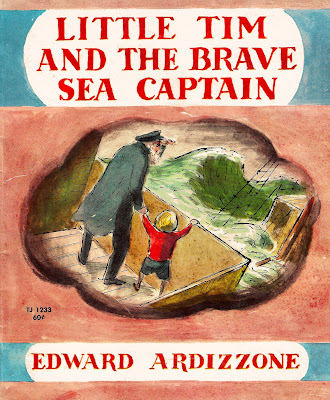
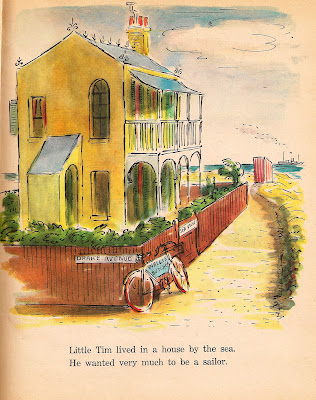

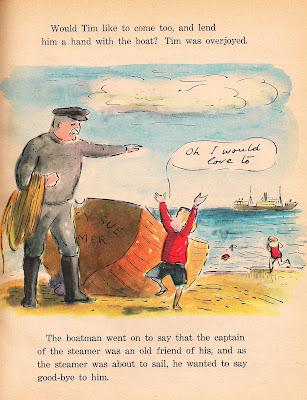








I enjoyed reading these books when I was young, cheers Marie